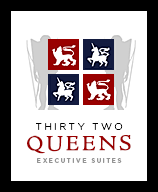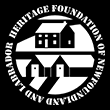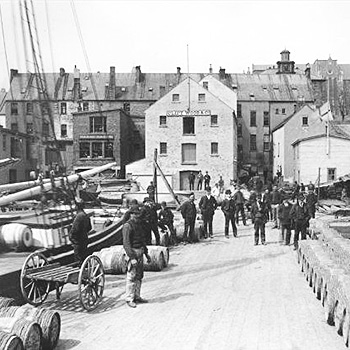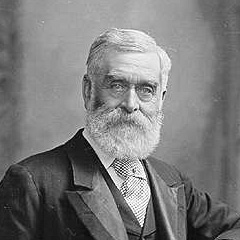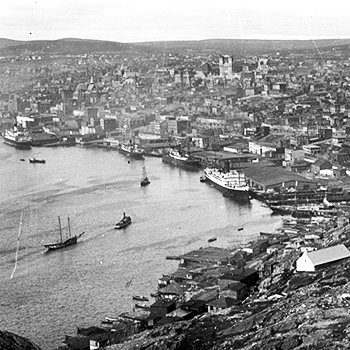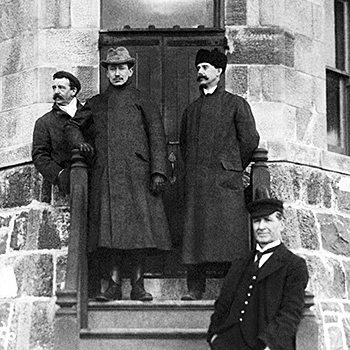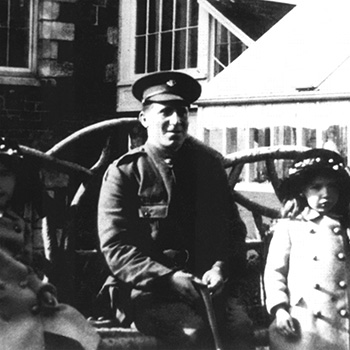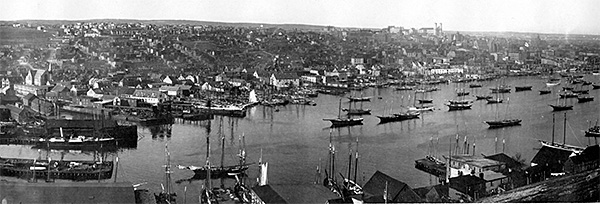EXECUTIVE RENTAL SUITES
BUILDING HISTORY
MEET A LONG STANDING MEMBER OF THE COMMUNITY
Ownership 1843-Present
While no one knows the original owner or builder of the building itself due to the loss of records in the 2nd Great Fire, it is known that Robert R. Wakeham (b.1797 d.1848), did own the land previous to 1843.
Robert Roberts Whiteway Wakeham, one of 18 principal shareholders in the Bank Of Newfoundland upon it's incorporation in 1844, was a very successful sailing vessel merchant, builder and owner of 11 ships or more who in later years became a prominent city lawyer and eventual Government Official. He took the oath as Clerk of the House of Assembly in 1837, and in 1847 became Chief Clerk and Registrar of The Supreme Court, and also Clerk of the Central Circuit court for an interm period. All of this was accomplished before Jan 31, 1848 when he passed away at 51 yrs of age.
Wakeham was the uncle to William Vallance Whiteway, one of the Republic's most famous politicians, and is known for giving Whiteway his first job after passing the bar exam and helped start his way toward becoming Newfoundland's Premier. (Equivilant to Canada's modern Prime Minister)
Some believe the house may have been built at Wakeham's request as early as 1835, but as we can not currently authenticate the claim it is assumed the land was sold sometime after his death in 1848 with the house's construction to follow.
In 1894, the house was registered to James and Mary Knight, the oldest record which still exists. It is unknown whether they owned the home and land before the fire or if they purchased it in 1894 but it is possible that they may actually have lived there as early as 1867. James Robert Knight was a successful commission merchant who owned a number of ships, having at least three merchant schooners on record at one time, the Harriet, Flash and Star, the last two built in Shoal Harbour, Trinity Bay and Bonavista Bay respectively.
Competing among the principal players in the import/export mercantile trades of old St. John's, he made his living in the purchase and transport of goods to and from clients around the island and abroad. His wife, Mary Knight was eldest daughter of Henry Clinton, Esq., a surgeon practicing in Harbor Breton, Newfoundland.
His father Thomas Knight, also a sailing merchant, and brother Michael T. Knight, who early in his career as civil servant was actually the first customs' collector for the coast of Labrador, were both members of the House of Assembly for Twillingate-Fogo at different times. It was during 1861-1869 for Knight senior, who's running mate in the district was the afore-mentioned Right Honorable William Whiteway, who went on to be three-time Premier of the Colony of Newfoundland, and then in 1885 for the latter, who was appointed by then Premier Robert Thorburn to Cabinet as Financial Secretary directly after the election.
Another Premier under responsible Government, Daniel Joseph Greene lived in the adjoining house of 34 Queens, during the time he was in office from 1894-1895. He stepped down after a short period to allow Whiteway his third term through by-election. Whiteway, a strong supporter of Canadian Confederation since 1859, is then noted between 1895 and 1897 for re-opening Newfoundland's talks with Canada. Although unsuccessful, his perseverance was remembered and the goal was eventually realized through growing necessity some 52 years later.
The twentieth century saw the house change hands often. In 1928, Knight's niece, Florence Canning bought the house and in turn sold it to William Chafe in 1942.
William was the original proprietor of W.H. Chafe and Sons, a well-known tailor with a popular Men's clothing store still in operation at 330 Water Street, opened nearly a century later and just a few doors down from the merchant offices of previous home-owner James Knight. A long time family business currently run by his descendants, Chafe's company has now enjoyed over 80 years of service in downtown St. John's.
Chafe sold the house to Robert George Fahey in 1957. Antonia McGrath, author, historical researcher and curator, bought the house in 1980 from Robert Fahey's widow, Mary Fahey, the same year as her book "Newfoundland Photography 1849-1949" was published through conjunction with the Newfoundland Museum.
Morris Reid purchased the house in 2008 and undertook the most recent restoration while adhering to the strict historical by-laws as imposed by both government agencies in 1991. Although he has not owned this particular property long, like the home itself his family linage has touched upon important points in Newfoundland's history.
His great-great grandfather Thomas Rose, was the city's Signalman for many years and the first to operate from National Historic Site Cabot Tower in 1900, the province's most familiar landmark. Signalmen performed the city's ship to shore communications through flag mast signaling like semaphore and a Marconi wireless station to control the shipping traffic of St. John's harbour. He is remembered for being the Signalman present during Marconi's historic first wireless telegraph across the Atlantic in 1901 and is the only Newfoundlander included in the photo of Marconi and his assistants, standing at bottom right.
Also of mention, his Great Grandfather William Tibbs was a decorated solider for his service during World War I in the Royal Newfoundland Regiment. He fought in the battle of Gallipoli in 1915, for which he received a number of medals. Tibbs, who subsequently was injured and lost his leg during Turkish shelling amid the trench warfare, received a parade through the city on his return awarded by the now Dominion of Newfoundland's Governor General, Sir Walter Davidson.
32 QUEENS ROAD
ST. JOHN’S, NEWFOUNDLAND & LABRADOR
MODERN AMENITIES & VICTORIAN CHARM IN THE HEART OF DOWNTOWN
A CITY OF ST. JOHN’S HERITAGE BUILDING & HERITAGE FOUNDATION REGISTERED STRUCTURE
